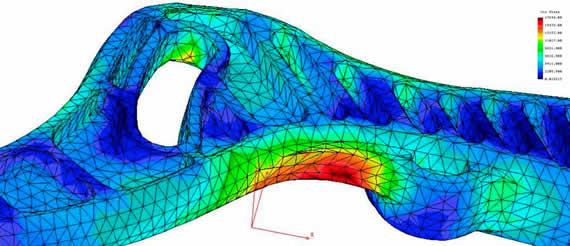Finite Element Analysis (FEA) is an effective computational tool used in many areas of engineering to study and forecast the behaviour of structures and systems subjected to various loads. Taking a class in FEA analysis may provide several advantages, but students must also be aware of the program’s limitations before enrolling. Let’s discuss the benefits and drawbacks of taking a FEA analysis course.
Pros
- Engineering Skills Improvement
Learn every aspect of advanced engineering analysis with the help of a course in finite element analysis. The course will teach you to model elaborate systems, set up the proper boundary conditions, and understand the outcomes of your analyses. The aerospace, automotive, and civil engineering sectors are particularly well-suited to professionals with these abilities.
- Real-world Applications
The applications of FEA analysis are quite varied and can be found in various fields. By enrolling in a class, you can learn how to apply FEA to address actual engineering challenges. This information can help you stand out to potential employers and advance in your chosen field.
- Problem-solving
FEA analysis involves partitioning a problem into simpler sub-problems. You can become more organised in addressing problems by learning the underlying principles and methods. This knowledge can be used in many different engineering fields and has many potential applications.
- Design Optimization Efficiency
Using FEA analysis, designers can compare and contrast various prototypes to find the one with the best performance characteristics. You can learn how to use the tools in FEA software efficiently and successfully by enrolling in a course. You can save money on prototypes and speed up the design process by using this method to compare several versions of your creation.
- Decision-making Improvement
When analysing the performance of structures and systems, FEA analysis gives engineers invaluable insights. If you know what FEA can and can’t do, you can make better design and analysis decisions. Because of this, engineers may develop more effective and affordable solutions to problems.
Cons
- High Learning Curve
It takes a deep familiarity with engineering fundamentals, mathematics, and numerical methods to tackle the challenging topic of finite element analysis (FEA). Those just starting or lacking a solid engineering background may find the learning curve exceptionally high. Learning and becoming proficient in FEA’s essential concepts may require time and effort.
- Software Complexity
Using various specialised software tools is standard practice when conducting an FEA analysis. A substantial time and money commitment may be involved in effectively learning how to use these technologies. In addition, the cost of software licensing might be prohibitive, especially for professional-level FEA applications.
- Sensitivity to Assumptions
Assumptions and simplifications are made to mimic real-world situations for FEA analysis. There is a strong correlation between the quality of the assumptions and the precision of the outcomes. There is a risk of erroneous or misleading conclusions being drawn if these assumptions are not well-chosen and the model is not checked against experimental evidence.
- Hardware Requirements
FEA analysis can be very computationally intensive, especially for big and complicated models. It is common practice for simulations to require high-performance computing resources, such as strong processors and large amounts of memory. For individuals or smaller businesses, the price burden of acquiring and maintaining such hardware can be prohibitive.
Conclusion
There are several benefits to taking a course on FEA analysis, including learning more advanced engineering techniques, gaining experience with practical applications, and developing more sophisticated problem-solving expertise. There are, however, some drawbacks to be aware of, including a high learning curve, sophisticated software, and susceptibility to assumptions. Before signing up for a course in FEA analysis, it is crucial to consider your individual needs and objectives.









